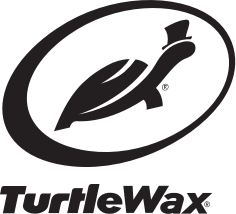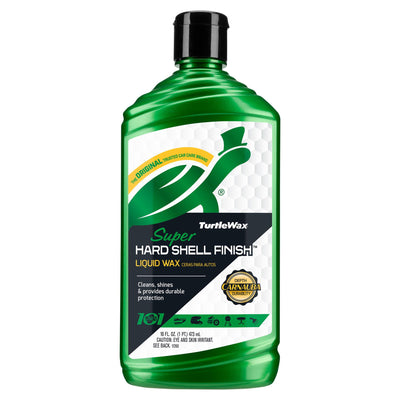
-
Exterior
-
Interior
-
Hybrid Solutions
Featured
- MISTER CARTOON
-
Kits
Featured
- Accessories
- Learn
-
Rewards
Earn Points Today
-
Product Finder
What Are You Working On Today?
- Home
-
Exterior
- Buy One Get One Free Deals
- New
- Best Sellers
- Problem Solvers
-
Wash
- waterless
- wash & wax one steps
- extreme foam
- heavy duty cleaners
- ph neutral car wash
- exterior car glass cleaner spray
- View all Wash
- Wax, Seal & Coat
- Paint Correct
-
Restore
- headlight restoration
- restore scratch repair
- trim restoration
- bug & tar
- metal & chrome finish
- View all Restore
- Wheel & Tire
- View all Exterior
-
Interior
- Buy One Get One Free Deals
- New
- Best Sellers
- Cleaners
- Carpet, Mats & Upholstery
-
Leather Care
- leather cleaner & conditioner
- best car interior cleaning products for leather-vinyl-rubber
- View all Leather Care
- Odor Elimination
- View all Interior
-
Hybrid Solutions
- Buy 1 Get 1 Free
- New
- Best Sellers
- Ceramic
- Graphene
- Interior
- Hybrid Solutions Pro
- View all Hybrid Solutions
-
Mister Cartoon
- Mister Cartoon Air Care & Foggers
- Mister Cartoon Wash, Wax & Detailer
- Mister Cartoon Interior, LVP & Protectant
- Mister Cartoon Wheel & Tire
- View all Mister Cartoon
-
Car Care Kits
- New
- Best Sellers
- Vehicle Detailing Kits
- Exterior Kits
- Interior Kits
- Hybrid Solutions Kits
- View all Car Care Kits
-
Accessories
- New
- Best Sellers
- Wax application
- Exterior Accessories
- Interior Accessories
- Buckets
- Cutting Pads
- Towels
- Sponges & Mitts
- Apparel
- View all Accessories
- Rewards
- Learn
- Product Finder
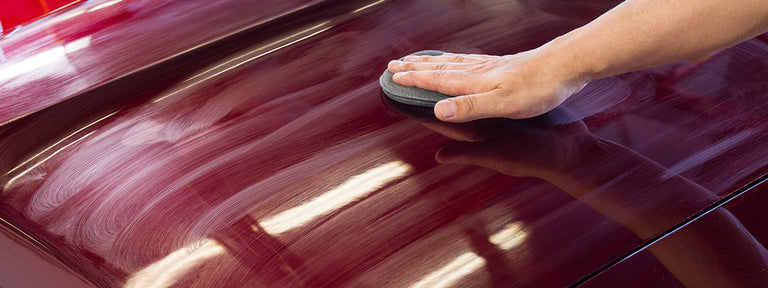
WHAT IS CARNAUBA WAX AND HOW SHOULD YOU USE IT?
In this article, you will learn:
- Why carnauba wax was once considered the gold standard for car waxes
- The strengths and weaknesses of carnauba wax as an automobile coating
- How to apply carnauba wax to your car’s finish
For decades, even before we used the term “detailing,” people were shining and protecting their cars with carnauba-based waxes – and for good reason. Back then, when people wanted to make their cars look great, carnauba wax checked a lot of boxes. It added a certain “wow” factor, it deepened the paint color, it helped water bead and run off the car, and it added a measure of protection to the car’s finish. Even though we have more scientifically advanced car waxes and coatings today, carnauba-based waxes still have an important role to play in the detailing routines of millions of car owners around the world.
So, what is carnauba wax? What makes it unique when compared to other waxes? And why and how should someone use it when detailing their car today? Let’s get to the bottom of all these questions and more!
The natural choice
Manufacturers in a variety of industries use carnauba wax as a raw material to make everything from car wax and cosmetics to dental floss, food and pharmaceuticals. For a material that’s so commonly used, you might be surprised to learn how uncommon carnauba wax is. In fact, carnauba wax can be found only in the leaves of one particular type of palm tree that only grows in northern Brazil.
As a car wax, carnauba wax got its big break when companies like Turtle Wax discovered its combination of performance attributes. Of all the natural waxes, carnauba wax is the toughest and has a high melting point. Both of these are critical to creating an effective and durable coating that needs to resist scratches and withstand temperatures up to 160 degrees. The last thing you’d want your car wax to do is wash off quickly or melt away in the sun.
Nature plus nurture
On its own, carnauba wax is not the buttery smooth product you see in the container of a paste or liquid car wax. It’s actually a hard, flaky substance. Car wax manufacturers add other ingredients, such as solvents, polymers and other waxes to make carnauba wax malleable and easy to apply to your car’s finish. As those other ingredients evaporate from your car’s painted surfaces, the carnauba wax cures and hardens on the clear coat, allowing you to buff it to a beautiful shine.
Beauty versus durability
When deciding whether to use a carnauba-based wax on your car, versus some other type of wax or coating, you should know the pros and cons of the different types of products. Of the natural waxes, most people find carnauba wax to be the best performer for durability and shine. As a natural ingredient, it has an indescribable glow that’s difficult to recreate with synthetic products. But, while it is durable compared to other natural waxes, carnauba wax isn't as durable as silicon-, ceramic- or graphene-infused coatings. It also doesn’t provide as much protection and chemical resistance, as a synthetic product. Choosing the right one for your detailing job can come down to how you use your car, what you’ll likely run into when driving and how often you plan to detail your car.

Consider your mileage, driving conditions and detailing routine
There are a few instances when a carnauba wax may be a better choice for you than a ceramic coating or paint sealant. If your car is a weekend driver and remains parked in the garage most days, a carnauba wax is probably a great choice for you. If you have a show car and you want incredible glow and old school shine, a carnauba wax will deliver for you. Or, if waxing your car is a labor of love that you enjoy doing four or more times a year, go with something like Super Hard Shell Liquid Car Wax.
On the other hand, if we’re talking about your daily driver, or a car that gets a lot of exposure to the sun, sand, harsh weather and/or road salts, you’ll want to pick a wax or coating that uses more durable and protective ingredients, like super hydrophobic polymers, ceramics or even graphene, the world’s strongest protective ingredient. For the ultimate protection, we recommend Hybrid Solutions Pro Flex Wax or Hybrid Solutions Pro to the Max Wax.

Wax on, wax off
If you have chosen carnauba wax, you’ll be happy to know that applying it is incredibly simple, regardless of whether it’s a paste or liquid. Start by washing and drying your car. You want a completely clean surface before applying anything to your clear coat. Next, remove any contaminants embedded in the surface with a clay bar or skip this step by using a carnauba-based, dual-action cleaner wax.
To wax your car, start at the roof and work your way down the pillars to the hood, trunk, fenders, doors and finally, the lower panels. Work in 2’ x 2’ sections, using a foam applicator to rub a small amount of wax across each section. Work the pad in a circular motion, following an even pattern, to consistently distribute the wax. Allow the wax to dry to light haze and use a clean microfiber detailing cloth to buff the area to a beautiful, glossy sheen. Continue working in 2’ x 2’ sections from the top down until you’ve covered the entire car.

Enjoy that beautiful glow
Once you’ve finished waxing your car, take it for a spin and show off your work! Your newly detailed car will surely turn heads with that trademark carnauba wax glow.

Super Hard Shell Liquid Wax
- Essential one-step car care solution for a clean, shiny finish
- Hard Shell Finish provides up to 12 months of protection from light scratches and swirls
- Safe to use on nonporous home surfaces, including synthetic marble countertops, appliances, chrome faucets and shower doors.
Turtle WaxSuper Hard Shell Liquid Wax
16.0 fl oz
- Long-lasting Shine Up to 12 Months
- Durable Water-Beading Protection
- Easy Application by Machine or Hand
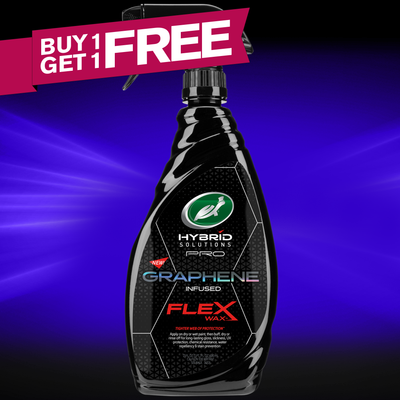
Graphene Flex Wax
- Buy One Get One Free on this Item - Use Code: B1G1FLEX
- Can not be used in conjunction with any other discount codes
- Ultra-premium car wax spray protects and shines wet and dry surfaces
- Patent Pending Graphene Infusion creates the Tighter Web Of Protection
- Simple spray-on solution can be used as a dry wax, rinse wax or even both!
Hybrid Solutions ProGraphene Flex Wax
23.0 fl oz
- Buy 1 Get 1 Free Use Code - B1G1FLEX
- Flexible Use: Multiple Application Modes
- Pro Graphene: Advanced Protection

Super Hard Shell Liquid Wax
- Essential one-step car care solution for a clean, shiny finish
- Hard Shell Finish provides up to 12 months of protection from light scratches and swirls
- Safe to use on nonporous home surfaces, including synthetic marble countertops, appliances, chrome faucets and shower doors.

Graphene Flex Wax
- Buy One Get One Free on this Item - Use Code: B1G1FLEX
- Can not be used in conjunction with any other discount codes
- Ultra-premium car wax spray protects and shines wet and dry surfaces
- Patent Pending Graphene Infusion creates the Tighter Web Of Protection
- Simple spray-on solution can be used as a dry wax, rinse wax or even both!
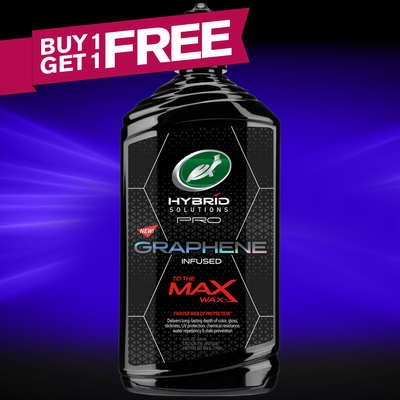
To The Max Wax™
- Buy One Get One Free on this Item - Use Code: B1G1MAX
- Can not be used in conjunction with any other discount code
- Most durable, professional grade liquid car wax; great for detailing experts and auto enthusiasts.
- Patent Pending Graphene Infusion creates the Tighter Web Of Protection™
- Easy-on, easy off liquid with UV absorbers shield painted surfaces to prevent damage and discoloration
- Chemical resistant, super-hydrophobic polymers glide on effortlessly for maximum gloss, water beading, & stain prevention
-
Sorry, we are currently out of stock.
WANT MORE TURTLE WAX?
Subscribe for your newsletter and the rewards will be in your inbox before you even get there
Latest
News, events and insights from Turtle Wax® worldwide
Offers
Exclusive offers and discounts on Turtle Wax® products
Rewards
Regular treats and surprises for all subscribers
Thanks! You should receive a confirmation email shortly.
